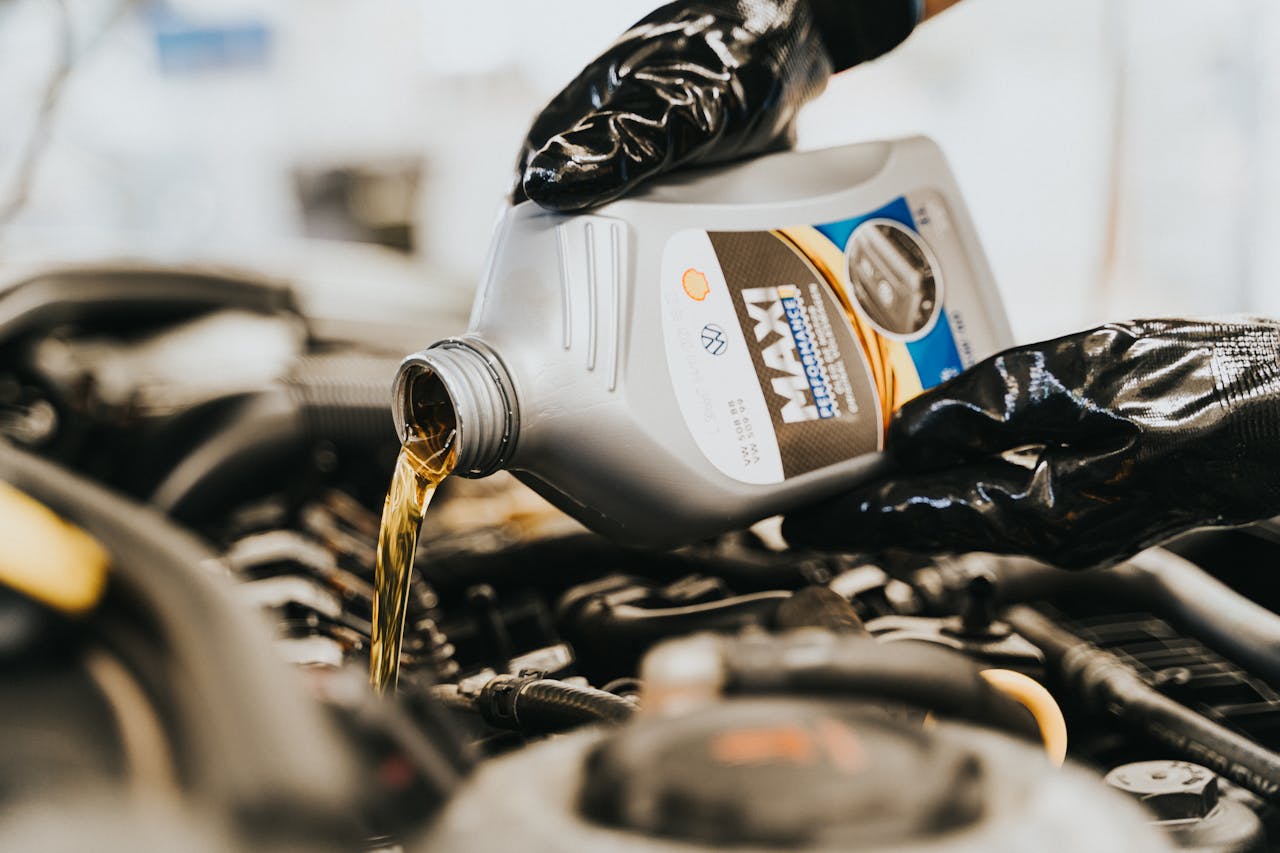Fluid Checks: Oil, Coolant, Brake Fluid, and Transmission Fluid
Maintaining your vehicle's fluids is crucial for its optimal performance and longevity. Regularly checking and replacing fluids like engine oil, coolant, brake fluid, and transmission fluid ensures your car runs smoothly and safely. Here’s a comprehensive guide to understanding these essential fluids, how to check their levels, and when to replace them.


Engine Oil
Importance
- Function: Engine oil lubricates the engine’s moving parts, reducing friction and preventing overheating. It also helps clean and protect the engine from wear and corrosion.
- Types: Different types of engine oil are available, including conventional, synthetic, and high-mileage oils. Refer to your vehicle’s owner’s manual for the recommended type and viscosity.
How to Check
- Locate the Dipstick: Find the dipstick, usually marked with a brightly colored handle, under the hood.
- Check the Level: With the engine off and cool, pull out the dipstick, wipe it clean with a cloth, reinsert it fully, and then remove it again. Check the oil level against the marked indicators on the dipstick.
- Add Oil if Needed: If the level is below the recommended mark, add the appropriate oil through the oil filler cap. Be cautious not to overfill.
When to Replace
- Interval: Follow the manufacturer’s recommendations for oil changes, typically every 3,000 to 7,00 miles, depending on driving conditions and oil type.
- Signs of Change: Look for dark, dirty oil, or a low oil level as indicators that it’s time for an oil change. Also, pay attention to any engine noise or performance issues.
Coolant
Importance
- Function: Coolant, or antifreeze, helps regulate the engine’s temperature by absorbing and dissipating heat. It also prevents freezing in cold weather and boiling in hot conditions.
- Types: Coolant comes in various formulations, including ethylene glycol and propylene glycol. Always use the type specified in your vehicle’s manual.
How to Check
- Locate the Reservoir: Find the coolant reservoir tank, usually a translucent plastic container with markings for "Full" and "Low."
- Check the Level: With the engine cool, check the coolant level against the markings on the reservoir. Ensure the level is between the minimum and maximum marks.
- Add Coolant if Needed: If the level is low, add the recommended coolant mixture. Never open the radiator cap when the engine is hot to avoid burns.
When to Replace
- Interval: Coolant should be replaced according to the manufacturer’s recommendation, typically every 30,000 to 0,000 miles.
- Signs of Change: Look for signs like overheating, coolant leaks, or discolored coolant. A sweet smell inside or outside the vehicle may indicate a leak.
Brake Fluid
Importance
- Function: Brake fluid is essential for the hydraulic braking system, allowing you to apply force to the brakes with minimal effort. It also helps prevent brake system corrosion.
- Types: Brake fluids come in various types, such as DOT 3, DOT 4, and DOT . Refer to your vehicle’s manual for the correct type.
How to Check
- Locate the Reservoir: Find the brake fluid reservoir, usually a small, translucent container located near the back of the engine bay.
- Check the Level: With the engine off, check the brake fluid level against the “Full” and “Low” markings on the reservoir. The fluid should be clear or slightly yellow; dark or dirty fluid indicates a need for replacement.
- Add Brake Fluid if Needed: If the level is low, add the appropriate brake fluid to the reservoir. Ensure you use the correct type to avoid damaging the braking system.
When to Replace
- Interval: Brake fluid should be replaced every 2 to 3 years or as recommended by the vehicle manufacturer.
- Signs of Change: If you notice a soft or spongy brake pedal, reduced braking performance, or a brake warning light, it may be time to check and replace the brake fluid.
Transmission Fluid
Importance
- Function: Transmission fluid lubricates the transmission’s moving parts, helps with gear shifting, and prevents overheating. It is vital for smooth transmission operation.
- Types: Transmission fluids vary based on the transmission type—manual or automatic. Check your vehicle’s manual for the correct fluid type.
How to Check
- Locate the Dipstick: For automatic transmissions, find the dipstick, usually located near the back of the engine bay. Manual transmissions often do not have a dipstick; instead, the fluid level is checked through a fill plug.
- Check the Level: With the engine running and the transmission warmed up, pull out the dipstick, wipe it clean, reinsert it, and then remove it again. Check the fluid level against the marked indicators.
- Add Fluid if Needed: If the level is low, add the recommended transmission fluid through the dipstick tube or fill plug, as applicable. Be cautious not to overfill.
When to Replace
- Interval: Transmission fluid should be replaced every 30,000 to 60,000 miles, depending on the vehicle manufacturer’s recommendations and driving conditions.
- Signs of Change: Look for symptoms like slipping gears, rough shifting, or unusual noises from the transmission. Discolored or burnt-smelling fluid also indicates a need for replacement.


Regularly checking and maintaining your vehicle’s fluids—engine oil, coolant, brake fluid, and transmission fluid—is essential for ensuring its performance, safety, and longevity. By understanding the importance of each fluid, knowing how to check their levels, and adhering to replacement schedules, you can keep your vehicle running smoothly and avoid potential issues. Make fluid checks a routine part of your vehicle maintenance to ensure reliable and trouble-free driving.












